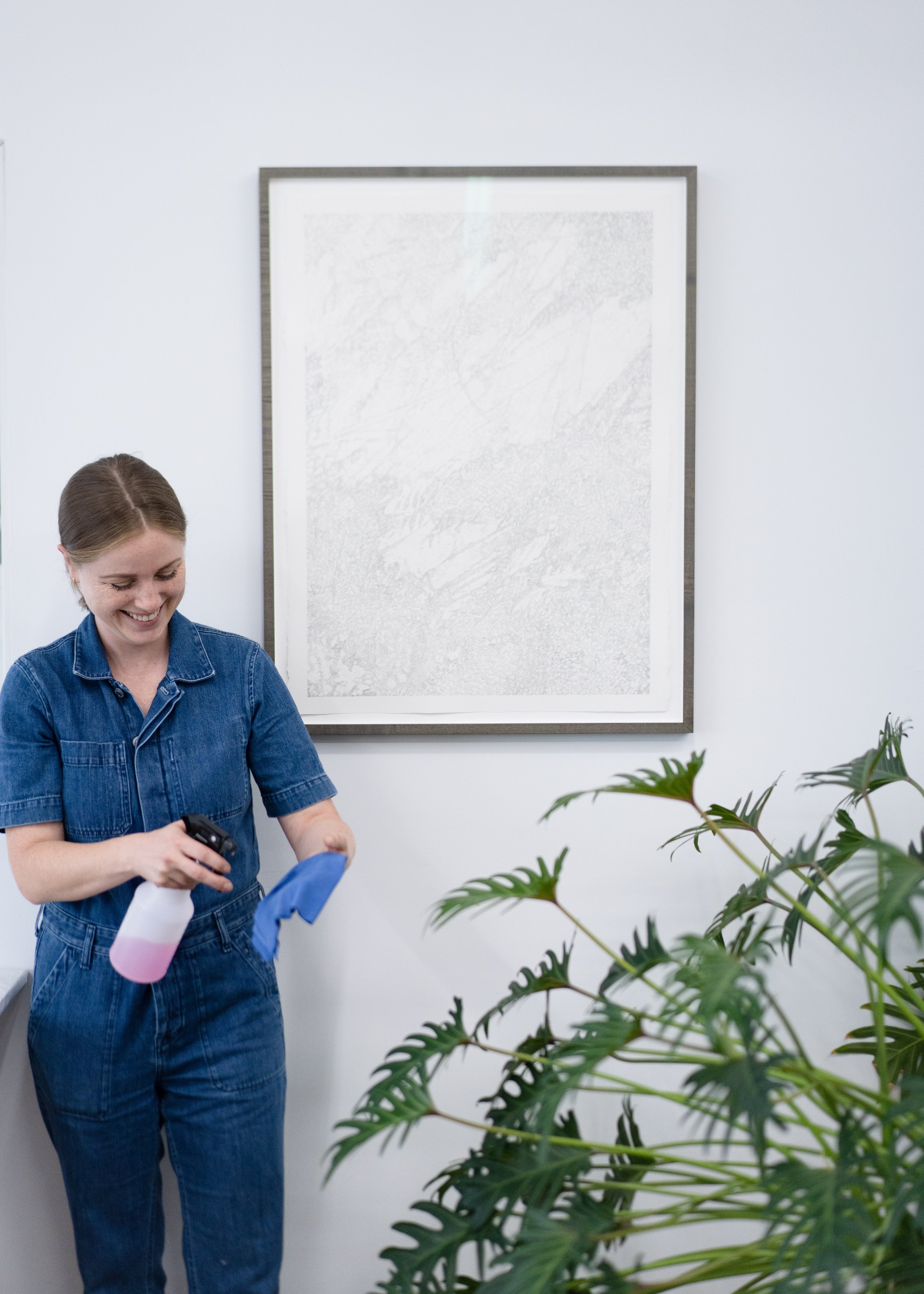Taking care of your frames once they’re hung on the wall is an important step to keeping your artwork looking as good as it did when you acquired it.
Here’s what you’ll need to maintain your frames: a few microfiber cloths, a cleaner appropriate for your glazing in a spray bottle (see below for our recommendations).
First, start with the dust. Dust will start to collect along the bottom lip and top of the frame quicker than you would expect it to. Use a dry household duster or a dry microfiber cloth and wipe as much of the dust off as possible. You can remove the frame from the wall and place it on a flat sturdy surface if you want, or just use a very light touch so you don’t accidentally pull your frame off its hanger. Of course, avoid touching the art if you need to dust a painting or other object without glazing.
For the glazing (plexiglass or glass that protects your artwork) a dry and clean microfiber cloth will usually do the trick for most grime and fingerprints.
Take the frame off the wall and place it on a flat sturdy surface. If your frame is too big, put it on a rug or carpeted surface and lean it against your wall. You can use a pillow or towel behind the top edge of the frame to protect both your wall and the frame. Wipe away any dust or debris first, and then use slight pressure and circular motions to wipe out any fingerprints.
Tougher spots may require some help from cleaning solutions. Just like clothes, each glazing type has different care instructions. Every DDG frame comes with a sticker on the back marked with which type of glazing was used.
For all glazing types:
Fill spray bottle with plain tap water and put 2-3 drops of a mild dish detergent (Ivory brand is one commonly available option). Try to use something that contains minimum, or preferably no, dyes or fragrances. We like to use biodegradable options.
At DDG, we use three microfiber cloths: one sprayed with cleaning solution, one dampened slightly with plain water to clean off any residual cleaning solution, and one dry cloth to remove any remaining moisture and prevent water spots from developing.
Don’t spray the frame, spray your microfiber cloth with the cleaner and point the spray away from any frames or artwork. Some cleaners may degrade the finish on your frame or damage unprotected artwork.
You don’t need to clean the entire glazing if there are only a few trouble spots, use just one finger with your microfiber cloth to target any spots where there may be fingerprints or tough smudges.
For even tougher smudges here are some glazing-specific instructions:
Optium
** Do not use commercial acrylic cleaners like Novus on Optium. They contain abrasives that will remove the coating on Optium.
Mix equal parts isopropyl alcohol and water in a spray bottle for tough to clean spots.
Make sure to dry off excess moisture using a dry soft cloth.
Art Glass, Museum Glass, other glass
** Do not use any glass cleaning products containing Ammonia. (standard Windex contains Ammonia) Ammonia is damaging to artwork and your frame.
You can use most glass cleaners that advertise being Ammonia-free. For a safer option, you can also mix equal parts isopropyl alcohol and water in a spray bottle.
Make sure to dry off excess moisture with a dry soft cloth.
OP3, FF, all other Acrylic/Plexiglass glazings
** Do not use alcohol or any other strong solvents on any uncoated acrylic glazings, it could cause cloudy or hazy spots or could cause discoloration.
If you want, you can use a commercial acrylic cleaner like Novus. If you use these acrylic cleaners, make sure to rinse off the solution by using a damp cloth and wiping the same area you just cleaned. Some of these cleaners can leave behind a waxy residue.




